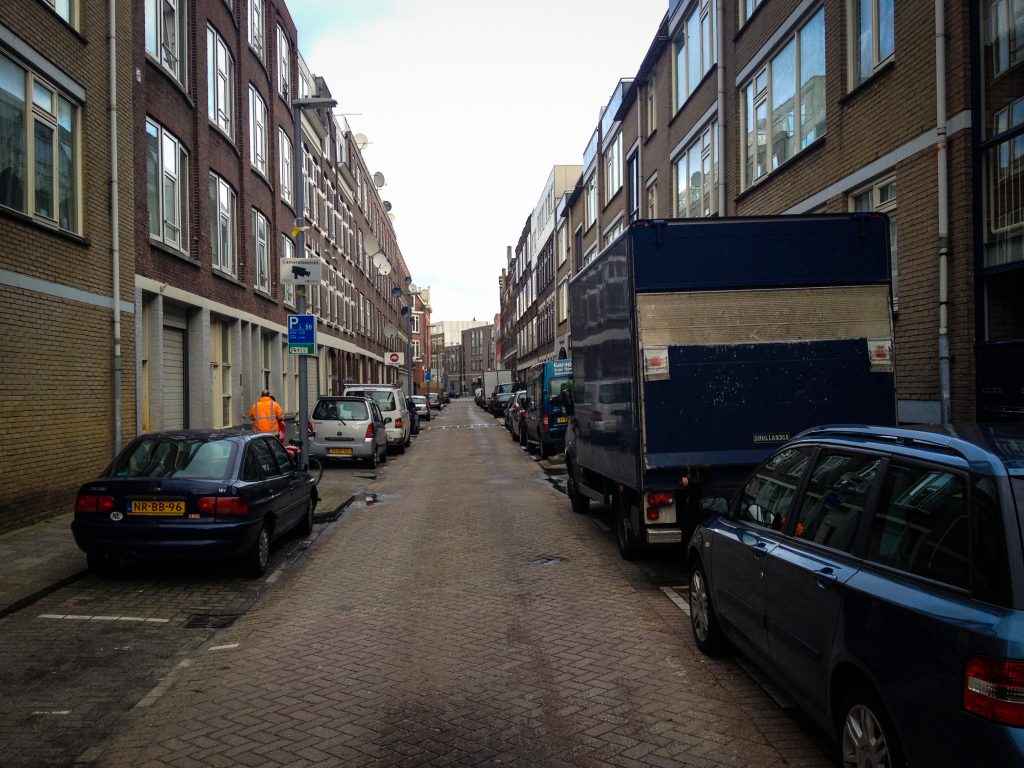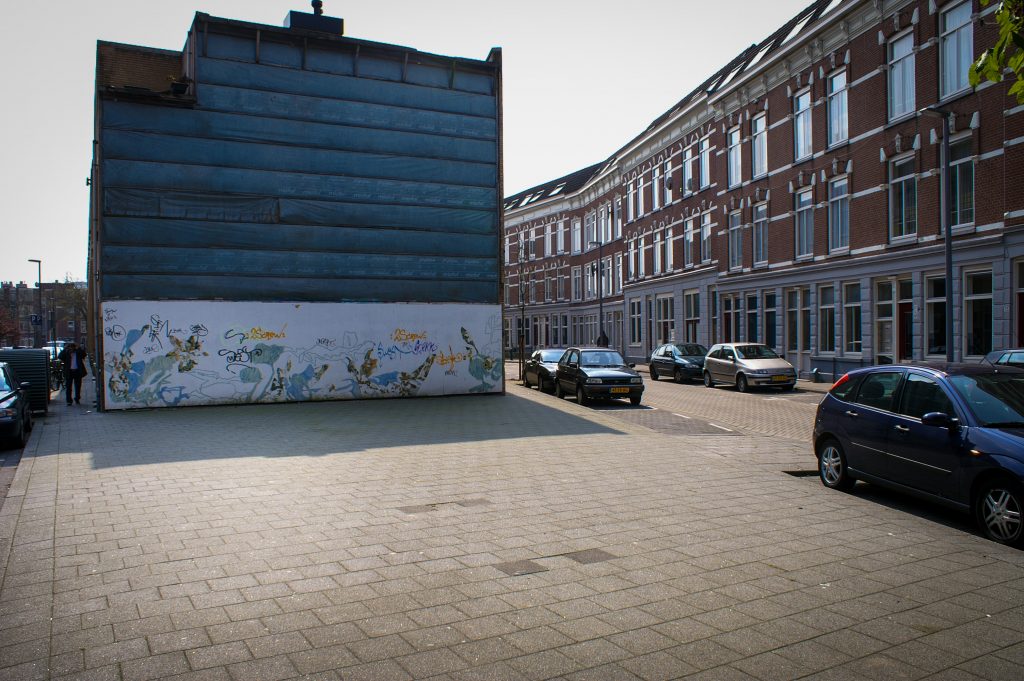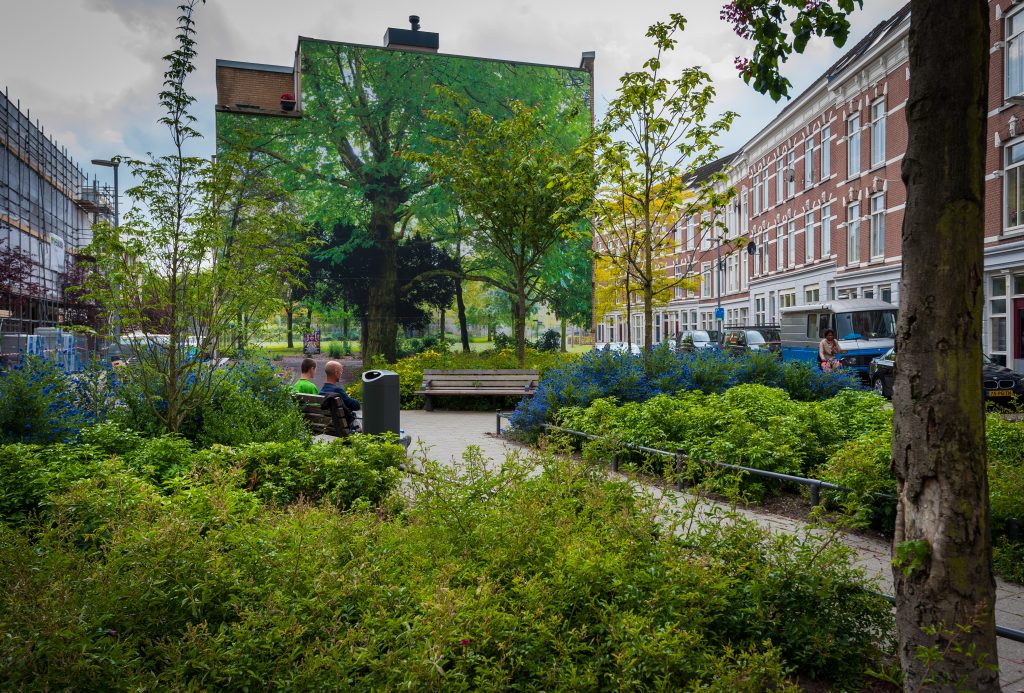It’s a long way from one person having an idea to a city fully implementing it on policy-level – Rotterdam’s story shows that it can be done, and how. We sat down with José Besselink, urban planner and Chief Editor of Rotterdam Walks 2025, and learnt how she got colleagues and citizens on board, how Rotterdam committed to putting the pedestrian on a pedestal, and how it all goes back to a festival in Argentina.
2016, El Rosario, Argentina: Gil Penãlosa shares his story of 8 80 cities, cities that work for both 8-year-olds and 80-year-olds (and should therefore work for everybody) at the Happy Cities Festival hosted by Argentinian Dutch El Desafío Foundation. Part of the audience is José Besselink, urban planner from the city of Rotterdam, feeling vindicated in her belief in human-centred design. The foundation has been laid for the path José wants to take with her hometown: to make the city a city for people.
Fast forward to 2020: The city of Rotterdam publishes its very own walking strategy, Rotterdam Walks 2025. Guiding the reader from ambition to action, it takes us on a journey that starts with lessons learnt from hosting the Walk21 conference in 2019, inputs they gathered from their citizens on if, why, and where they walked, the vision of a stroll through Rotterdam in 2025, and of course, taking centre stage: An inventory of where the city currently stands, and where it aims to go. So, what are the lessons learnt along the way, and what are the key take-aways?
Here’s a 5-step guide on how to follow Rotterdam’s example:
Opening Internal Doors Through External Input
“In the beginning, I was slightly alone in this. I felt like being a lobbyist within my own organisation”, José tells us. Slowly but surely, she planted the seed: She recommended Gil Peñalosa as a keynote speaker for the Dutch Mobility Matters Conference in 2017, organised site visits and meetings with him and other key players in the city. In the same period, both the Rotterdam Mobility Approach and the Vision on Public Space were implemented: two overarching policy documents that shifted towards a focus on active mobility, putting walking and cycling ‘on top of the pyramid’. When meeting Jim Walker from Walk21 later that year, the timing was right, and everything fell into place. The timing was right to take the next bold step and convince the city of Rotterdam to host the Walk21 annual conference in 2019.
“You can’t host a conference on walking and not have any good examples of yourself”, José states pragmatically, describing how hosting Walk21 opened doors. “You should seek for an accelerator from outside your organisation to help convince set the agenda within the organisation. It could also be inviting an expert from abroad who has a lot of expertise on a specific topic,” she continues. Often, it’s not even about bringing in new perspectives, but about bringing in new voices sharing the same (your) perspectives, as it’s always a matter of who’s communicating a message: “You could say or share the same narrative as them, but if it’s a famous name within the urban planning network, it has a lot more strength and power.”
For Rotterdam, Walk21 served as a catalyst in creating their walking strategy, not only with all the inspiration that was brought to the city but also with the team that was installed to organise the conference. Suddenly, it was not only José pushing the walking agenda but a whole team that was passionate about the topic and wanted to get from inspiration to actual implementation and policymaking after the Walk21 conference ended. To make sure that the conference’s legacy wouldn’t just fade away, Rotterdam made use of the momentum and enthusiasm created, and installed a programme manager and an action plan coordinator to follow through with the creation and implementation of the city’s walking strategy – plus an interdepartmental team with representatives from the mobility, health, maintenance, safety, sports, and accessibility departments.
“From starting this on my own with one colleague, I’m now part of a full programme team,” José summarises proudly.
Collaborate, Engage, Intertwine: Properly Anchor Walkability
We’re all pedestrians, walking is somewhat too obvious – and still, an explicit choice is necessary to give it political backing and actually start redesigning streets in cities.
On a strategic level, having a walking strategy can be essential, serving as a framework to justify funding, setting up (binding) goals, and implementing changes on a policy- and street-level. You need to anchor what has been “too obvious” all along both politically and strategically.
What’s noteworthy in Rotterdam’s case is how it succeeded to link walkability inter-departmentally: With the many topics it touches upon, a walking strategy goes beyond the mobility and urban planning perspective. Rotterdam’s walking strategy is tied in closely with the city’s strategy on Spatial Planning and Environment, the Rotterdam Mobility Approach, the Vision on Public Space, the Healthy 010 Strategy, the Safety Strategy – and a lot of policy papers also touching upon the topic, such as the Clean Air Policy Memorandum, the Action Plan for Noise, the Climate Strategy, the Accessibility Policy, the Cycling Vision for 2025, the Tourism Vision, the City Centre as City Lounge Programme, and more.
Linking the walking strategy to all the other programmes and visions the city has, adds power and weight to the topic and gives a range of different lines of arguments, also potentially opening new funding pots. This is how to turn walking from something that’s “too obvious” to a necessary crossover-topic that essentially relates to your city’s liveability.
This connectedness also reflects in Rotterdam’s walking programme team, with colleagues from the urban planning, mobility, public health, property management, public safety, sports, social development, and accessibility departments being part of it. Even if this kind of collaboration might be unusual in your municipality, push for an integral approach, work across departments and silos, join forces for this topic that clearly goes beyond departmental affiliation – each department will without a doubt feed off this knowledge-exchange and link it back to their other tasks: “The team really works because we have different types of people, different types of expertise, and different competences. It’s a win-win situation for all of us, I think this is what makes it very strong”, José is convinced.
Involve Citizens, Experiment, and Get Community Leaders on Board
If you’re planning a city for people, it should be rather obvious who to consult: The people you’re planning it for, your citizens. Rotterdam started doing so by reaching out to its city panel with a survey (1.900 citizens replied) and a campaign, asking them why they walk or don’t walk, what amount of time walking is considered acceptable when getting from A to B, and where they do and don’t enjoy walking. With the results of the “Will you walk with me” campaign, the city created a map of Rotterdam with 3500 hearts and broken hearts, indicating where improvements of the walkability should be prioritised (see pages 11 and 12 in the strategy).
When it comes to convincing entrepreneurs and neighbours of upcoming changes in street design, be aware of the opposition you might face, and work with the instruments you have: Rotterdam always appoints a project manager who’s responsible for community participation and engagement when redesigning a street, and they collaborate with those entrepreneurs that are already convinced: “It is better to have them spread the word instead of us”, José speaks from experience.
To create more awareness and to drive behavioural change, the city also begins to work with local ambassadors – community leaders that already walk a lot and have integrated walking into their lifestyles: “The biggest challenges that we are now facing is behavioural change. Creating awareness about health and the benefits of walking, besides the investments in public space, go hand in hand. It’s about connecting these investments to a social dimension and behavioural change by involving communities and people.” That way, you can link back community expertise to city policies.
Besides, the city highly values experiments and pilots to get their message and vision across: “We have launched a tactical intervention programme to show the community what the city could look like, using parklets or facilitating several experiments where we have created more space for people on a temporary basis.” From a communication perspective, Rotterdam started sharing before and after pictures on Social Media, as they found that “as soon as we redesigned a street, people forget about what it looked like before. We want to make people more aware about changing the city”.




Interested in seeing more? Check out a vast number of before and after pictures here.
Work On Your Dataset and Map out a Walking Network
Like in a lot of other cities, data on walking was partly lacking in Rotterdam when starting the process. “We know everything about car mobility, about public transport and also about cycling in the last decade, but on walking somehow not,” José states and continues: “We have data on everything, on the location of benches, of trees, you name it, there’s data. We need to focus on what type of data is going to help us in our pedestrian strategy”. Collecting the needed data is now part of Rotterdam’s action plan: Combining different data sets into GIS layers, including community feedback, and making this data available to the designers working in the area helps them understand the main challenges and priorities of citizens.
For all other modes of transport, such as cycling or public transport, there is a clearly mapped out route network – reason enough for Rotterdam to develop an urban pedestrian network as well. Through this network and the positioning of street typology, a toolkit with design principles for pedestrians is being developed. It’s not only a guideline for designers but also links back to handbooks and guidelines for (accessible) public spaces and design principles for networks of other transport modes.
Three Things to Focus On: Policy, Pilots, Policy
When being asked for advice on how to advance walking in cities that haven’t yet come as far as Rotterdam, José outlines the importance of policy: “In the beginning, I’d say policy is key. It might be hard if people aren’t yet convinced – it’s a huge step from nothing to creating a policy. Start with experiments and pilots to show what the city of tomorrow could look like and try to loop this back into the policy and strategy level”.
She also strongly recommends opting for an integral approach, as it will only make your message and your narrative stronger and more powerful – involve local communities and link back their expertise to the policy-level as well. José points out how important the holistic concept of networking is: “Map out a network, involve as many people as possible, and use networking as a type and way of working” to create the importance of the topic in the city.
In a Nutshell
In a nutshell, here are our cherry-picked ingredients from Rotterdam’s success story when it comes to putting the pedestrian on a pedestal:
- Get expert advice from outside the municipality/city to help accelerate the topic
- Opt for an integrated approach when it comes to both the team and the strategy’s setup
- Involve your citizens, convince them with experiments, and work with community leaders
- Work on your dataset, map out a network and link everything back to urban planners
- Policy, pilots, policy: Back your strategy politically and use policies as a framework


